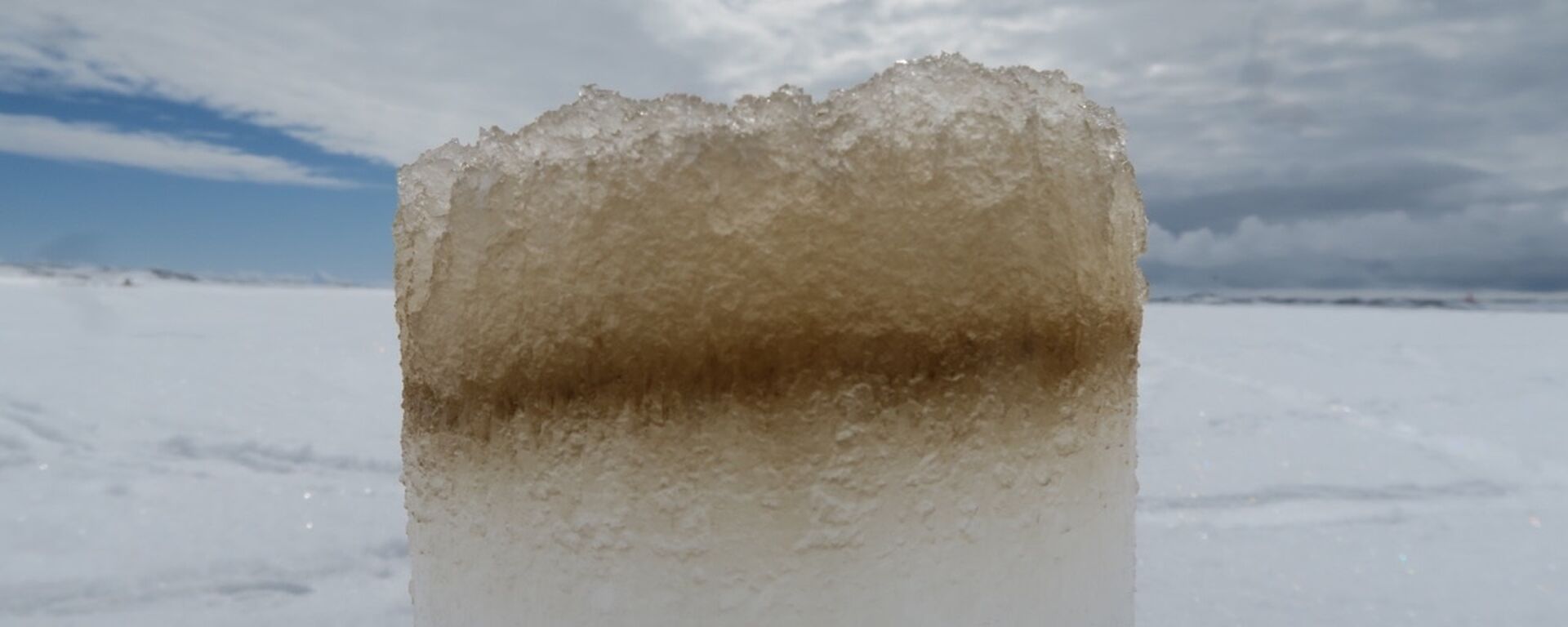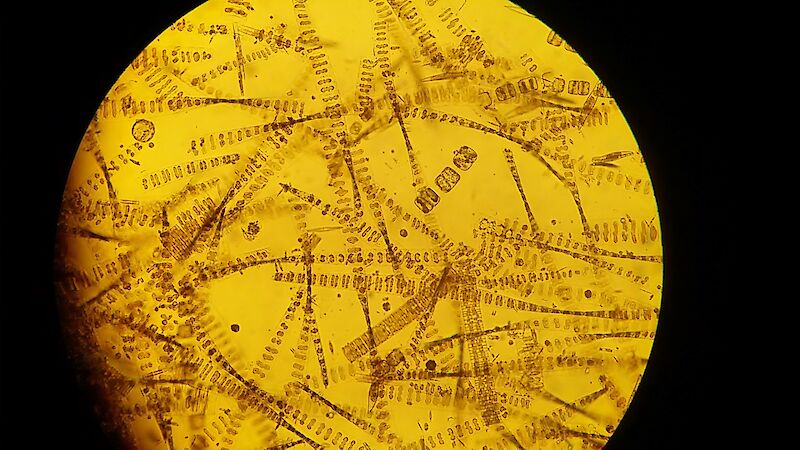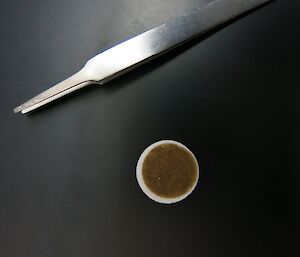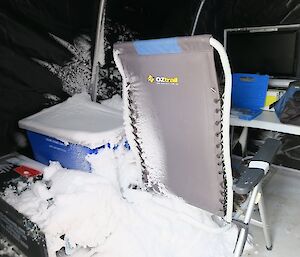30 November
Two days ago the weather improved and we were able to return to our sampling site on the sea ice. There was loads of new snow and we spent some time digging for our equipment and opening up the ROV hole again.
Despite our best efforts to seal our tent before the storm, there was some snow inside. Fortunately it was only in one corner and we were able to clean up things quickly and get the ROV back in the water.
During the first ROV dive it became immediately clear that the blizzard had brought a lot of change to the sea-ice environment. The new snow attenuates the sunlight very efficiently and it was very dark under the ice. The ice had also warmed up and looked less ‘crisp’ from below — an indication that the bottom of the ice is starting to melt. Ice algae that were previously attached to the bottom of the ice were also now floating in the under-ice water, considerably reducing our visibility through the ROV cameras.
Ice algae are microscopic plants that grow in specific habitats at the sea-ice surface, in its interior, and at the bottom of the sea ice. Fast ice is generally characterised by bottom communities that are dominated by microscopic algae called diatoms. These algae have silicate frustules and form colonies and chains (see photo taken through a microscope), and are adapted to the low light conditions under the ice.
Once ice algae are released from the ice they can ‘seed’ the water column and contribute to phytoplankton production, or they can aggregate and then sink quickly to the seafloor where they provide an important food source for benthic (seafloor) animals. Ice algae grow early in the season and provide an important food source for winter-starved animals in the water column and on the seafloor.
The contribution of ice algae to the overall marine plant production varies across different regions of Antarctica. In the off-shore pack ice, algae are estimated to contribute about 10 percent to the total annual microscopic plant production. In contrast, estimates for land-fast ice areas are higher, with values up to 50 percent and more. As a general rule we assume that the longer the ice season is in an area, the larger the contribution of ice algal production to total plant production. Predicted future changes in Antarctic ice conditions are expected to reduce the contribution of ice algae.
In our project we are developing new optical methods to measure ice algae with the ROV, but we are also using classical ice coring methods to ground-truth the new methods. To do this we need to collect a lot of ice cores, saw them into pieces, melt the pieces and then collect the algae on filters. We then measure the algal pigment content on the filters in our laboratory on station.
Today is a lab day for me and I am in the process of filtering around 100 litres of melted ice core water through small filters. I started 5 hours ago and I am about half-way through. I am very much looking forward to go out on the ice again tomorrow!
Klaus Meiners — Chief Investigator





